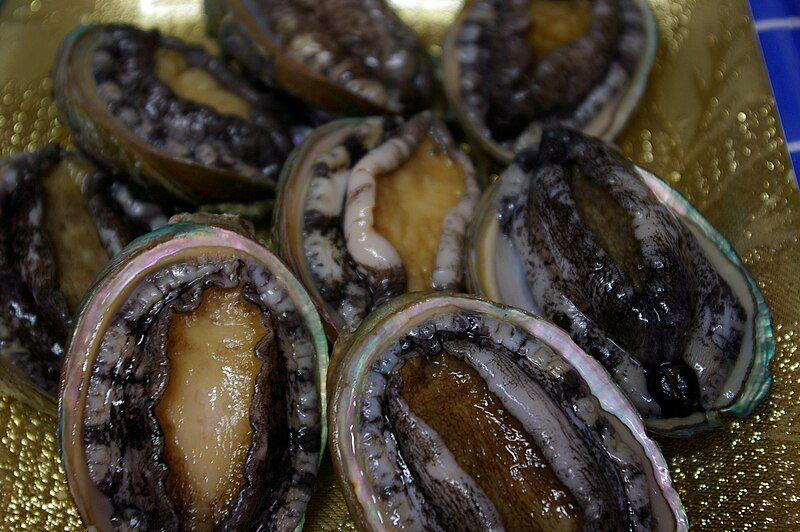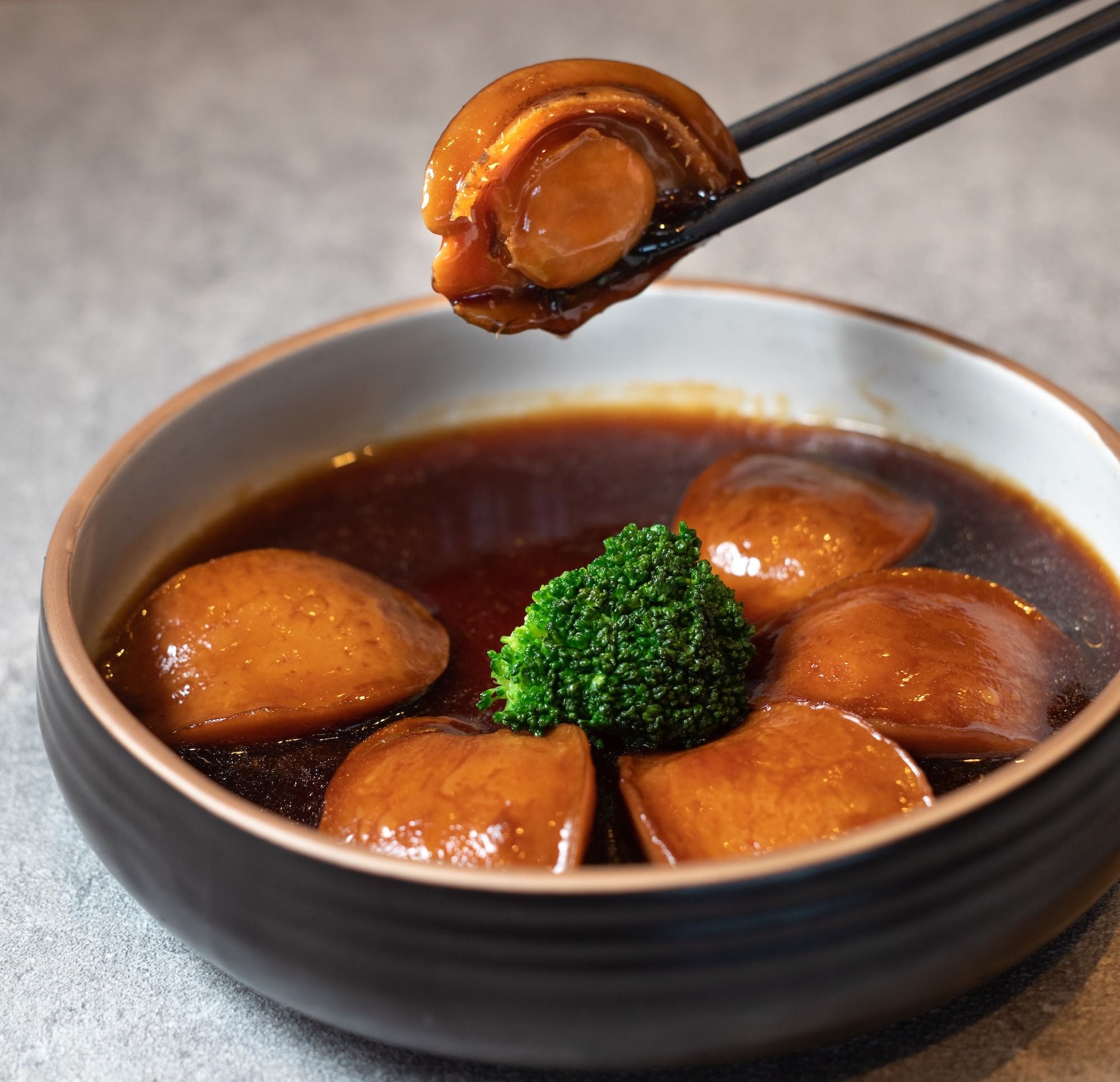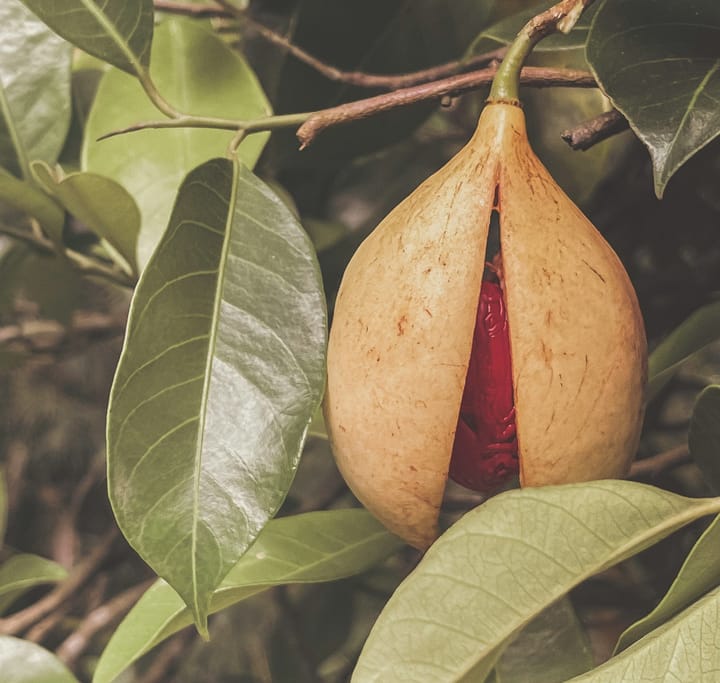Why Is Dried Abalone So Expensive?
Abalone's premium cost stems from its labor-intensive harvesting, slow growth rate, and rising demand, especially in Asian cultural celebrations. Its meticulous preparation, like drying, and its luxury status further elevate its price in the culinary world.

The significant price tag of abalone stems from its scarcity and the challenges in harvesting it.
Being a sea snail, each abalone requires individual hand-collection from the ocean. Its status as a luxury item, akin to Wagyu beef or caviar, further elevates its cost.
What is Abalone?
Abalone is a gastropod mollusk from the Haliotidae family, placing it in the same category as whelks and sea slugs. In simpler terms, it's a sea snail.
Unique among mollusks, it's a univalve, possessing a protective shell on one side while the opposite side adheres to rocky surfaces.
The shell, reminiscent of a sea's ear due to its distinctive ear-like shape, has not only intrigued many with its appearance but also with its flavor.
Top Dried Abalone Brands
Wild abalone is in high demand but hard to get. While their taste and shells differ by region, the most expensive abalone varieties come from Japan.
Those from Mexico, Chile, Australia, Japan, New Zealand, and South Africa are top-tier in the culinary realm.
Japan stands out in the global abalone market for its meticulous harvesting techniques and exceptional quality standards.
While other nations like Australia (known for its green lip abalone), South Africa (perlemoen abalone), and Mexico (red abalone) produce excellent varieties, Japanese abalone commands the highest prices due to traditional harvesting methods, limited quantities, and superior taste profiles.
The three most prestigious Japanese abalone varieties include:
- Japanese "Net" Abalone (Haliotis gigantea) - Also known as "Madaka," this large variety can reach up to 20cm in length.
Prized for its substantial meat yield and distinctive netted pattern on its shell, it commands premium prices. Its flavor profile is characterized by a deep umami richness and tender texture when properly prepared. - Yoshihama Abalone (Haliotis discus hannai) - Harvested from the pristine waters of Iwate Prefecture, Yoshihama Abalone is considered one of Japan's finest. Its exceptional quality comes from the cold, nutrient-rich currents that flow through its habitat. The meat has a perfect balance of sweetness and brininess with a firm yet tender texture that's highly coveted by high-end restaurants.
- Oma Abalone (Haliotis discus hannai) - From the same species as Yoshihama but from the Oma region of Aomori Prefecture, these abalone are harvested in extremely small quantities. What makes Oma abalone exceptional is the mineral-rich waters and traditional hand-diving harvesting methods. They command some of the highest prices globally due to their intense flavor concentration, vibrant color, and exceptional texture.
Price of Abalone

Wild-harvested abalone can fetch extraordinary prices in the global market, with premium varieties commanding significant sums.
While fresh wild-caught abalone typically sells for US$100-300 per kilogram depending on size, quality, and origin, it's the dried form that reaches truly exceptional price points.
Dried abalone represents one of the world's most expensive food items, with premium varieties selling from US$1,000 per kilogram.
This remarkable price increase occurs because during the drying process, abalone loses approximately 80-90% of its original weight while concentrating its flavor.
When considering that only about 25% of a whole abalone's weight is edible flesh to begin with, the true value becomes even more striking.
Premium Japanese varieties command the highest prices globally:
- Japanese "Net" Abalone (Haliotis gigantea): The most prestigious Japanese variety sells for US$2,900 to US$6,400 per kilogram (dried), making it one of the world's most expensive seafood items.
- Oma Abalone (Haliotis discus hannai): These premium specimens from Aomori Prefecture fetch around US$1,000 onwards per kilogram (dried) in luxury markets.
- Yoshihama Abalone (Haliotis discus hannai): This variety typically sells from US$1,000 per kilogram (dried), still commanding premium prices but slightly lower than the other two Japanese varieties.
Flavor Profile: Fresh vs. Dried Abalone
Fresh abalone delivers a clean, subtle oceanic flavor with a sweet brininess reminiscent of scallops but distinctly its own.
The taste is delicate and nuanced, offering gentle umami notes that don't overpower the palate, with younger specimens presenting an even more subtle profile.
When properly prepared, fresh abalone provides a pure expression of the sea with a clean finish.
Dried abalone, by contrast, undergoes a remarkable flavor transformation through its extensive processing.
The drying and aging concentrates and intensifies all flavor compounds, developing a profoundly complex umami character that fresh abalone cannot match.
The taste becomes richly savory with deep caramelized undertones, creating a multidimensional flavor experience.
When rehydrated and slow-cooked, dried abalone absorbs surrounding flavors while contributing its concentrated umami essence, resulting in an intensely satisfying depth and a distinctive lingering finish that builds with each bite.
Here are Several Factors Driving the Premium Costs of Abalone

Limited Supply and High Demand
Overfishing & Sustainability Concerns: Decades of intensive harvesting have severely depleted wild abalone populations worldwide. This has necessitated strict fishing quotas and regulations to protect remaining stocks.
In Perth, Australia, for example, authorities have implemented highly restrictive measures: harvesting is permitted for only one hour on four specific Saturdays from December to February, with a strict limit of 15 abalone per person.
Additionally, numerous areas have been designated as complete no-fishing zones to allow populations to recover.
Seasonal Demand Fluctuations: Abalone prices experience significant spikes during Chinese New Year celebrations, when demand reaches its annual peak.
During this festival period, prices can increase by 30-50% compared to other times of the year, as abalone is considered a symbol of good fortune and prosperity.
Environmental Factors: Abalone thrives specifically in cold, nutrient-rich coastal waters with particular temperature ranges.
The primary harvesting regions include Australia, New Zealand, Japan, South Africa, and the western coast of North America.
Climate change and rising ocean temperatures have further threatened wild populations, contributing to their scarcity and higher prices.
Size as a Premium Factor
The "Heads" Measurement System: In the abalone market, size is typically measured in "heads," following Hong Kong's traditional catty (斤) standard where 1 catty equals approximately 600 grams.
This system refers to the number of abalone pieces required to reach this weight standard.
For example, "8-head" means eight pieces collectively weigh one catty (600g), while "16-head" means sixteen smaller pieces are needed to reach the same weight.
Premium Pricing for Larger Specimens: Larger abalone (represented by fewer heads per catty) command substantially higher prices due to both their rarity and superior culinary properties.
For example, Japanese Net abalone sized at 6-7 heads per catty can cost up to US$6,400 per kilogram, while smaller specimens at 16-17 heads per catty might sell for US$2,900 per kilogram.
This considerable price differential reflects not only the scarcity of larger specimens but also their preferred texture, presentation potential, and culinary versatility in high-end cuisine.
This Hong Kong-originated measurement system has become the international standard for grading and pricing dried abalone throughout Asia and global luxury seafood markets, with the most prestigious being the exceptionally rare "4-head" or "2-head" varieties.
Culinary Preference for Larger Abalone: Chefs and culinary experts prefer larger abalone for several reasons.
Larger specimens offer more consistent texture throughout their meat, provide more impressive presentation opportunities, and allow for specialized cutting techniques that showcase the abalone's distinctive layered structure.
The texture of larger abalone is also often considered superior, with a perfect balance of tenderness and resistance that smaller specimens cannot match.
Dried Abalone: The Premium Variation
Value Multiplication Through Drying: The dried version of abalone commands prices many times higher than fresh abalone.
While premium fresh abalone might sell for $100-300 per kilogram, dried abalone from the same source can fetch $2,000-6,400 per kilogram.
This price differential reflects not only the concentration of flavor but also the substantial weight loss during the drying process—approximately 80-90% of the original weight is lost.
Candy Heart Processing: The most valuable form of dried abalone is known as "candy heart" (糖心鲍), named for its amber-colored center that develops during specialized drying techniques.
This preparation method, which originated in Japan and has been adopted by premium producers worldwide, requires extraordinary skill.
The process involves precise temperature control, humidity management, and regular massaging of the abalone over a period of 15-30 days.
The Tasmanian brand Candy Abalone has become particularly renowned for perfecting this technique, which explains its premium price point of $890 per kilogram—still significantly lower than top Japanese varieties.
Culinary and Cultural Value
Distinctive Sensory Profile: Abalone possesses a unique combination of flavor and texture that's difficult to replicate with other seafood.
Its taste is subtly sweet and briny with distinctive umami notes that reflect its oceanic origin.
The texture presents an intriguing contrast—simultaneously tender yet pleasantly chewy. When properly prepared, premium abalone offers a mouthfeel comparable to a refined blend of scallop and foie gras.
Cultural Significance in East Asia: Abalone holds profound cultural importance throughout East Asia. In Japan, where it's known as "Awabi," it's considered the truffle of the sea and features prominently in high-end kaiseki cuisine.
In China, abalone (鲍鱼, Bàoyú) symbolizes good fortune and prosperity, making it essential for significant celebrations like Chinese New Year, important business banquets, and wedding feasts. This cultural status as a prestige food further elevates its market value.
Health and Nutritional Benefits
Nutritional Profile: Abalone offers impressive nutritional benefits, being rich in high-quality protein (approximately 24g per 100g), omega-3 fatty acids, iodine, phosphorus, and vitamins B12 and E. It's also relatively low in fat compared to other protein sources.
Traditional Medicine Applications: In traditional Chinese medicine, abalone has been valued for centuries for its purported benefits to kidney and liver function, vision improvement, and overall vitality.
The shell itself (石决明, Shí Jué Míng) is used in traditional remedies for various eye conditions and liver ailments.
These perceived health benefits contribute to its premium status and pricing in wellness-focused markets.
Summary
Japanese dried abalone commands extraordinary prices due to converging factors: strict harvesting limits protecting depleted wild stocks; meticulous individual hand-harvesting processes; lengthy 3-7 year growth periods; and specialized processing requiring 15-30 days of precise temperature control and daily massage.
The drying process alone creates tremendous value, with abalone losing 80-90% of its weight while developing an intensely concentrated umami flavor profile with complex caramelized undertones.
Larger specimens (fewer "heads" per 600g) fetch premium prices for superior texture and culinary versatility.
Its cultural significance as a prosperity symbol in East Asian traditions further elevates its status as an essential luxury ingredient, particularly during Chinese New Year celebrations.


